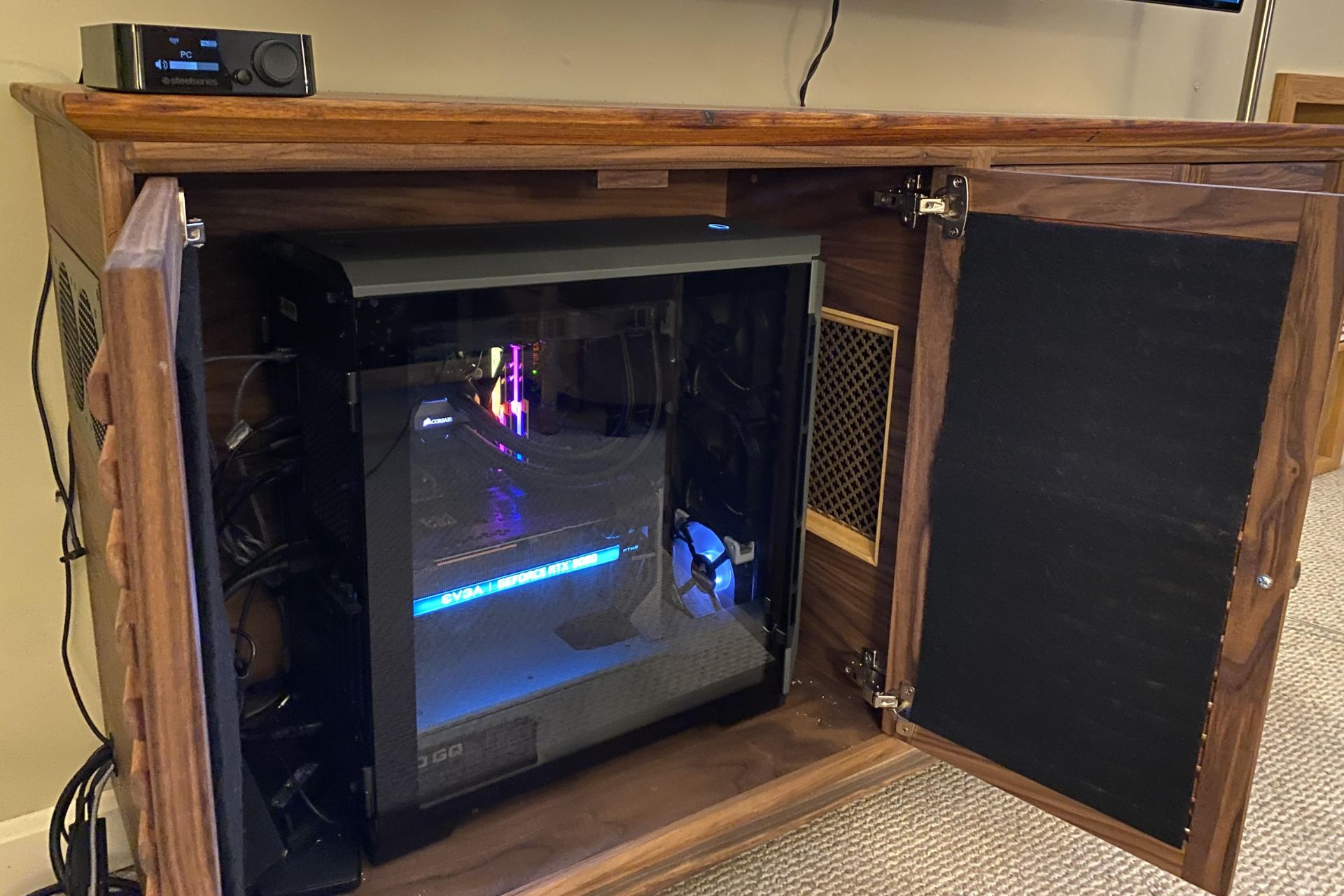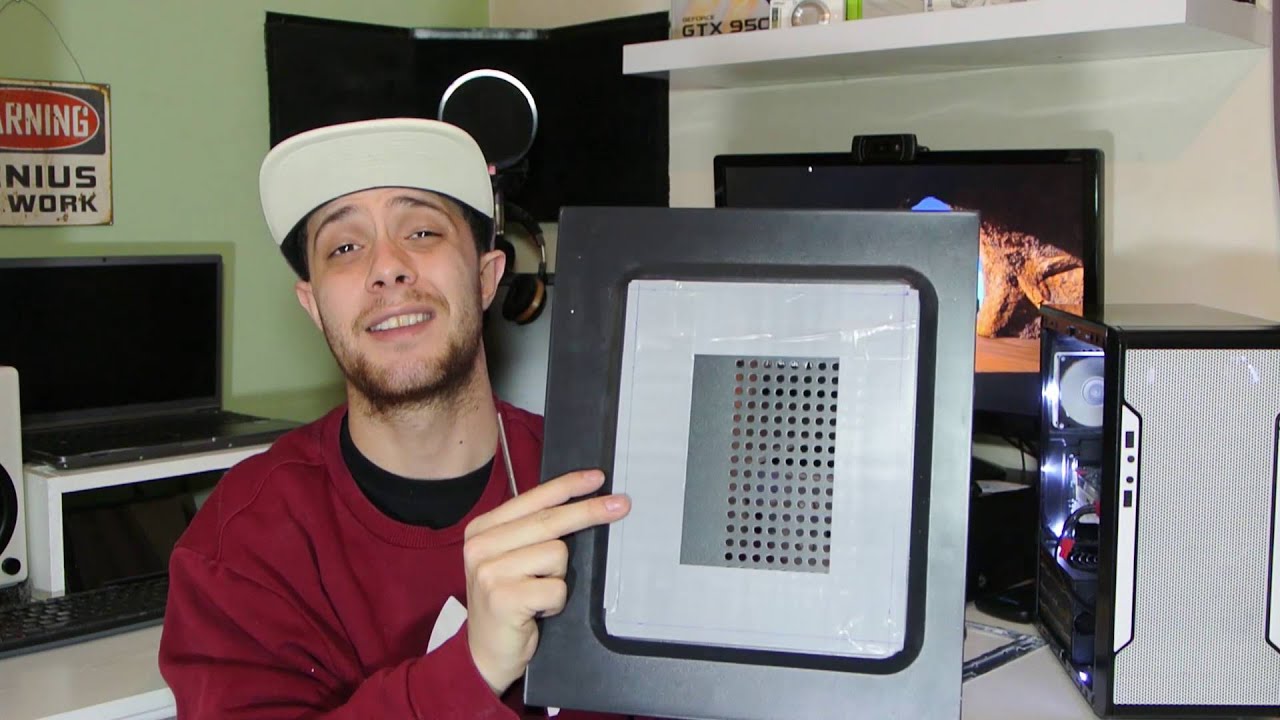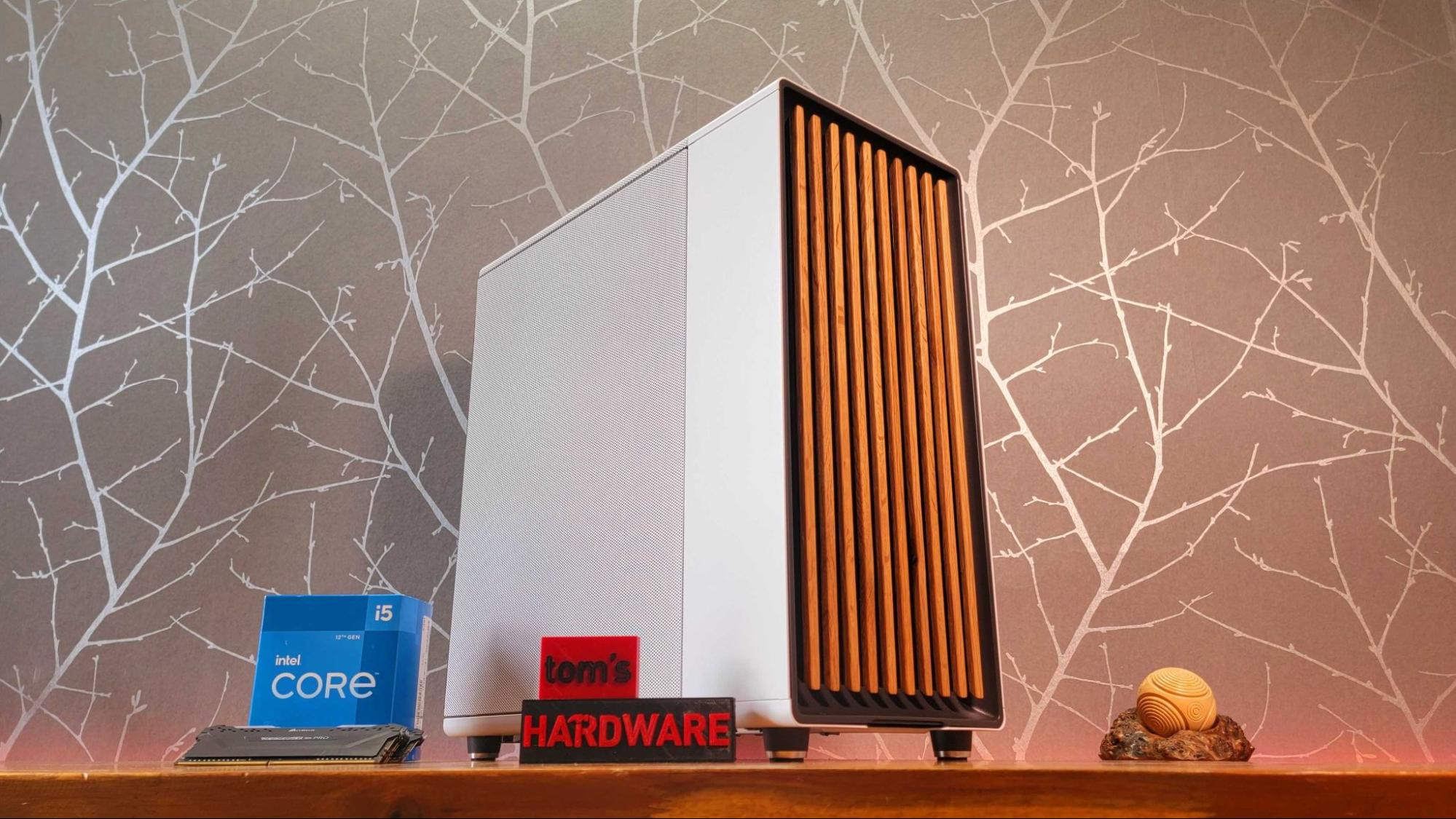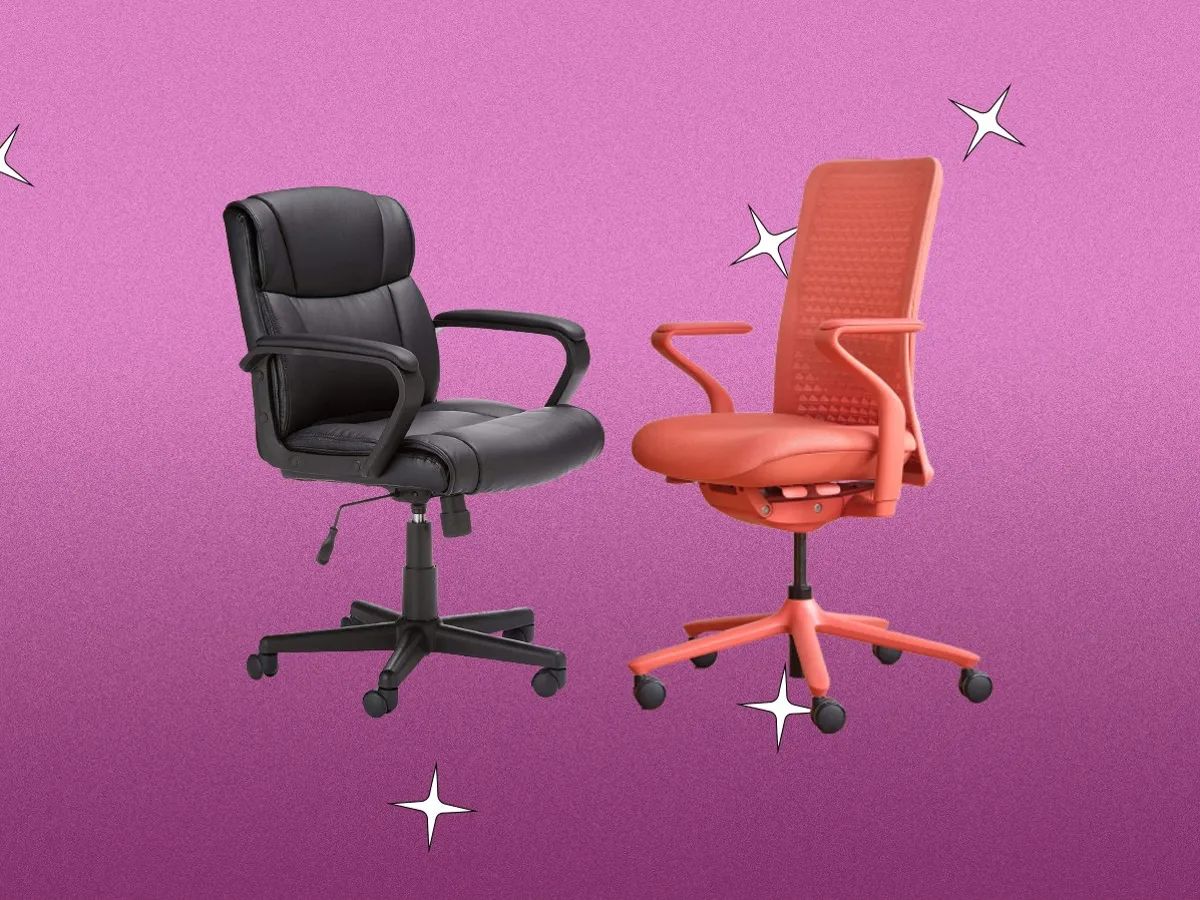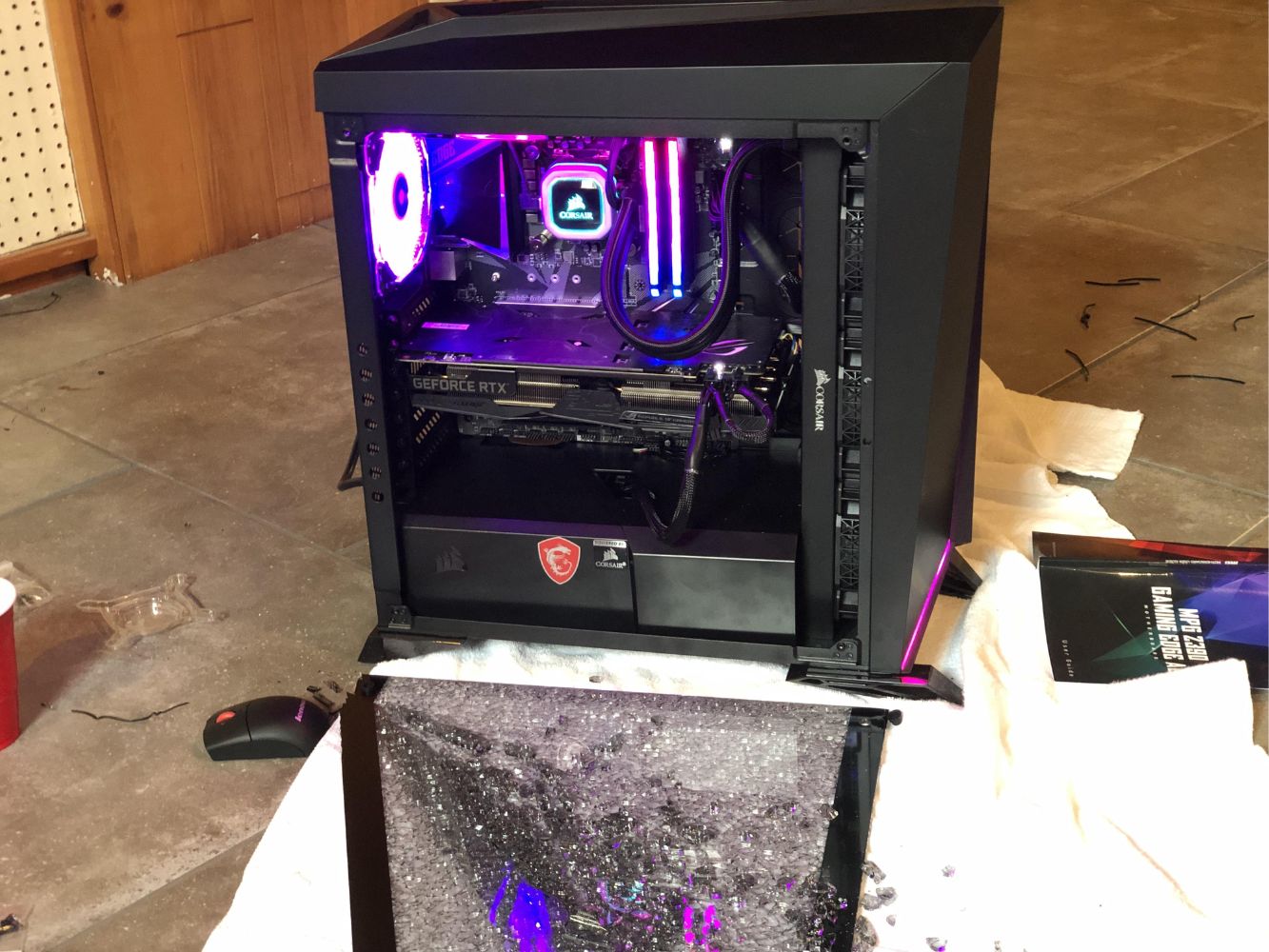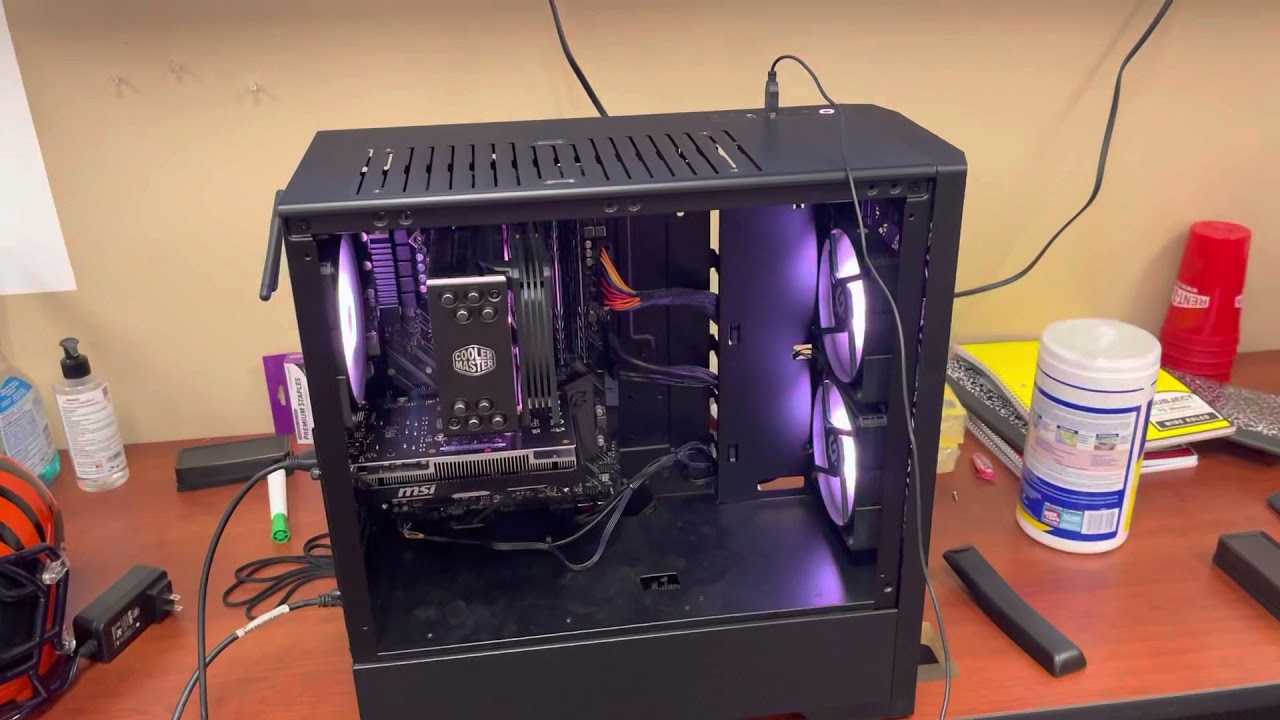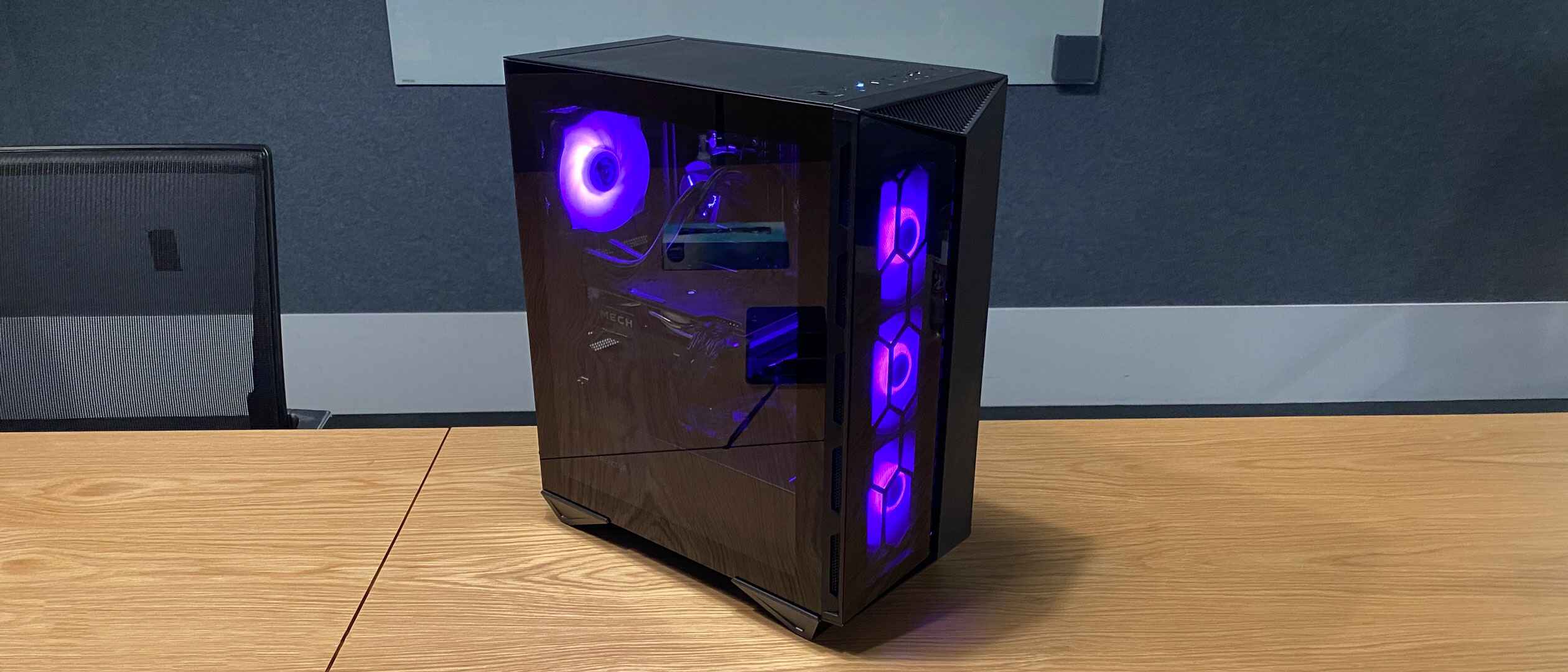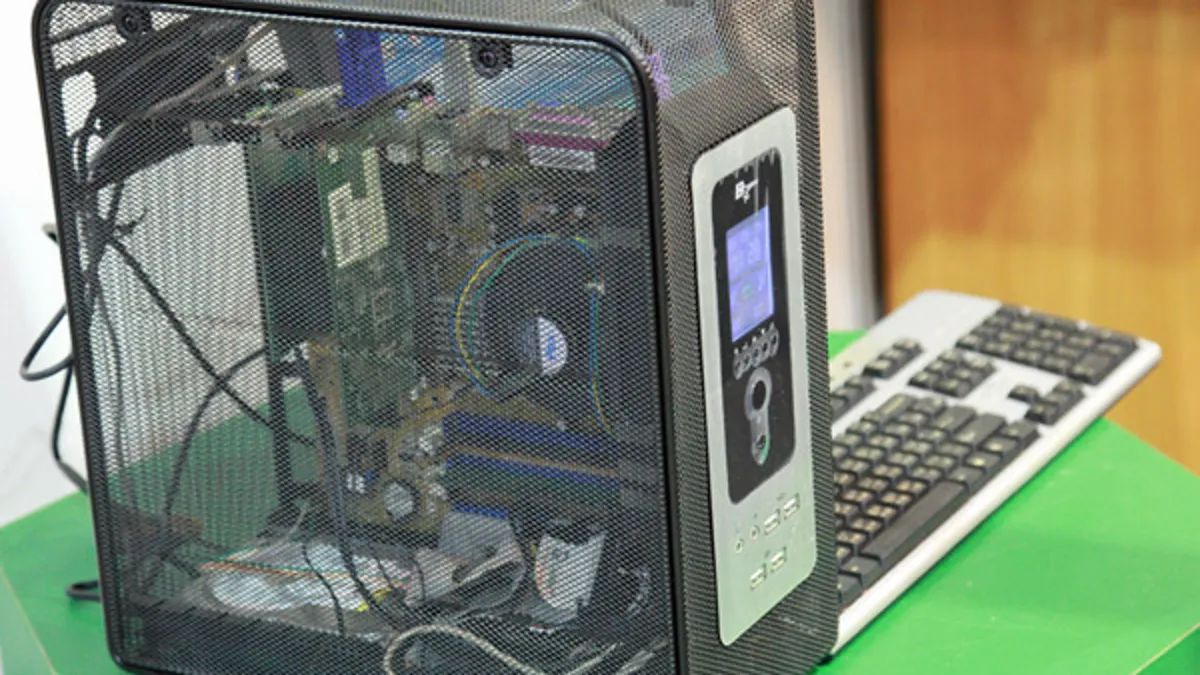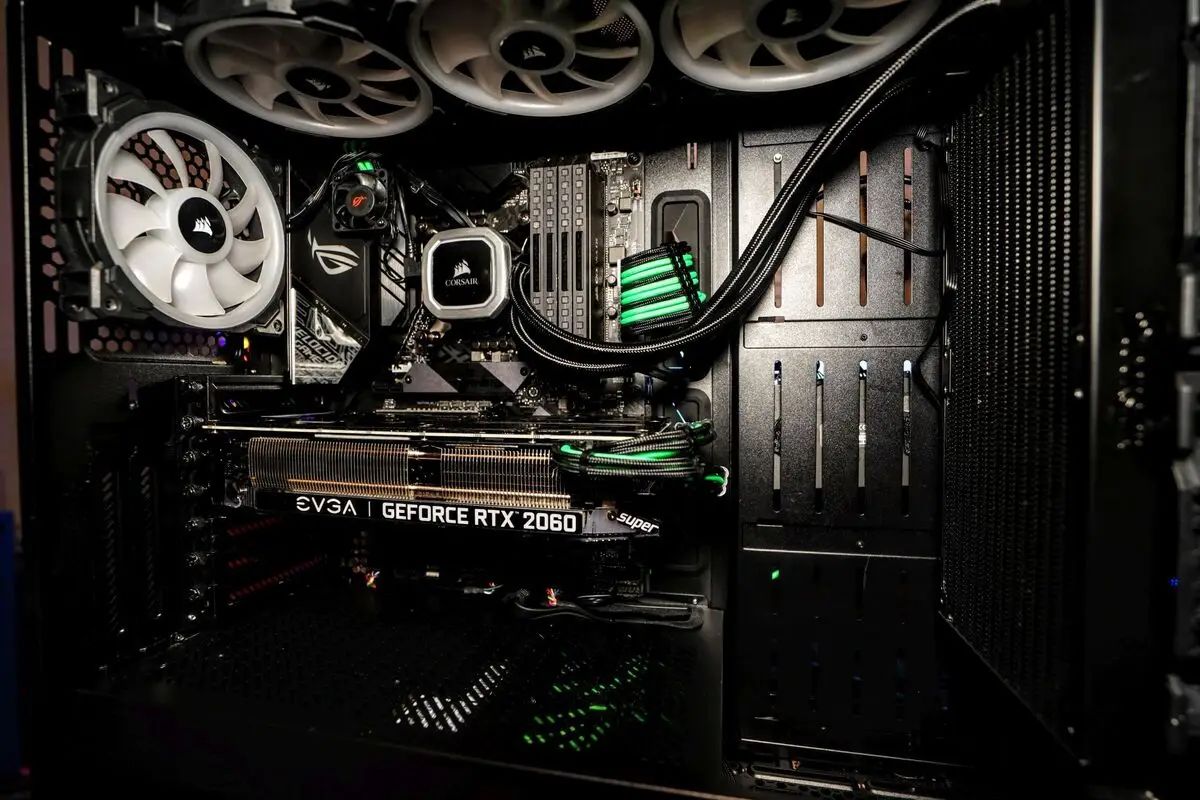Introduction
When setting up your computer workstation, it’s important to consider the placement of your PC case. The surface on which your PC case sits can have a significant impact on both its performance and longevity. Choosing the right surface and placement for your PC case is crucial to ensure proper airflow, cooling, and protection from dust and other potential hazards.
Whether you have a custom-built gaming rig or a professional workstation, finding the ideal spot for your PC case is essential. In this article, we will explore different options for placing your PC case and discuss the importance of airflow and ventilation. By the end, you’ll have a better understanding of how to optimize your PC case placement for optimal performance and longevity.
It’s worth noting that the choice of where to place your PC case may depend on various factors, including available space, convenience, and personal preference. Consider the following options and weigh the pros and cons to find the best fit for your needs.
Choosing the Right Surface
When it comes to placing your PC case, one of the first considerations is selecting the right surface. The surface should provide stability, protection, and proper ventilation for your PC case. Here are some factors to consider when choosing the right surface:
- Stability: Ensure that the surface you choose is sturdy and can support the weight of your PC case. A wobbly or unstable surface can pose a risk of accidental tipping or damage.
- Vibration Control: Look for a surface that can dampen vibrations to minimize noise and prevent any potential damage caused by vibrations. Some surfaces, like wooden or rubber surfaces, can absorb vibrations effectively.
- Dust Protection: Consider a surface that minimizes the accumulation of dust. Dust is not only unattractive but can also impact the performance and lifespan of your PC components. Surfaces like glass or surfaces with smooth finishes are easier to clean and less prone to collecting dust.
- Electrostatic Discharge (ESD) Protection: If you live in an environment with a high risk of static electricity, consider using an ESD mat or grounded surface to prevent static discharge from damaging your PC components.
- Cable Management: Look for a surface that allows for easy cable management. Built-in cable management features or enough space to tuck away cables can help maintain a neat and organized workspace.
Keep in mind that the surface you choose should be suitable for the specific use of your PC case. If you have a compact form factor PC, you may be able to get away with a smaller surface. However, if you have a full tower PC with multiple components, you’ll need a larger surface area to accommodate all the necessary peripherals and provide proper airflow.
By carefully considering these factors, you can choose a surface that not only provides stability and protection for your PC case but also enhances the overall aesthetics of your workstation.
Options for Placing Your PC Case
Once you’ve chosen the right surface for your PC case, it’s time to decide on the placement. There are several options available, each with its own advantages and considerations. Let’s explore some popular options:
- Desktop Placement: Placing your PC case on the desktop is a common choice, especially for smaller form factor cases. It provides easy access to the ports and buttons on the front of the case, making it convenient for everyday use and maintenance. However, it may occupy valuable desk space and can be prone to accumulating dust if not regularly cleaned.
- Floor Placement: If you have a larger PC case or want to free up desk space, placing your PC case on the floor can be a suitable option. Just make sure the surface is clean and the case is elevated slightly to prevent dust and debris from accumulating beneath it. Be cautious of potential hazards such as kicking or stepping on the PC case as you move around your workspace.
- Wall Mounting: Wall mounting your PC case is an excellent space-saving solution, especially if you have limited floor or desk space. There are various wall mount brackets available that securely hold your PC case against the wall. Make sure to consider the weight limit and compatibility of the mount with your PC case. Additionally, ensure proper ventilation and easy access to the ports on the back of the case in this setup.
- Rack Mounting: Rack mounting is commonly used in professional settings, data centers, or server rooms. It involves placing your PC case in a specialized rack or cabinet. Rack-mounted cases allow for easy organization, scalability, and efficient cooling with dedicated airflow. However, this option is typically reserved for larger setups or businesses rather than home users.
When deciding on the placement option, consider factors such as available space, accessibility, aesthetics, and the specific needs of your setup. Regardless of the choice, ensure that there is sufficient airflow, proper cable management, and easy access to the components for maintenance and upgrades.
Desktop Placement
Placing your PC case on the desktop is a popular choice for many computer users. It offers convenience, easy access, and a visually appealing look. Here are some considerations when opting for desktop placement:
Convenience: Having your PC case on the desktop allows for easy access to the front ports, buttons, and optical drives. This makes it convenient to connect USB devices, insert CDs or DVDs, and perform other tasks without bending down or reaching behind the case.
Space: Depending on the size of your PC case, desktop placement may occupy valuable desk space. It’s important to ensure that you have enough room for your keyboard, mouse, monitor, and other essential peripherals. Consider the dimensions and weight of your PC case to ensure stability and avoid clutter.
Aesthetics: Placing your PC case on the desktop can enhance the overall aesthetics of your workspace. You can choose a PC case with a sleek design or LED lighting to complement your desk setup and create an impressive visual impact.
Dust Accumulation: One potential downside of desktop placement is that the PC case is more prone to accumulating dust. As the case is situated on the desk, it is exposed to more airborne particles. Regularly cleaning your PC case and using dust filters can help minimize dust buildup and maintain optimal airflow.
Noise: Depending on your PC case and its cooling system, desktop placement can contribute to increased noise levels. The proximity of the PC case to your ears may make fan noise more noticeable. Consider using quieter fans or opting for sound dampening features if noise is a concern.
Cable Management: Desktop placement provides an opportunity for efficient cable management. You can easily route and organize cables behind your PC case to maintain a clean and clutter-free workspace. Velcro straps, cable clips, or cable management accessories can help keep cables neatly in place.
Desktop placement is well-suited for smaller form factor PC cases or setups where easy accessibility is crucial. It offers the advantage of convenience and visual appeal, but it’s essential to make sure you have adequate desk space and implement proper dust control and cable management practices.
Floor Placement
Floor placement of your PC case can be a practical option, especially if you have limited desk space or prefer a clean and uncluttered workspace. Here are some considerations to keep in mind when opting for floor placement:
Desk Space: Placing your PC case on the floor frees up valuable desk space, allowing you to have more room for other peripherals like monitors, keyboards, and mice. This can be particularly beneficial if you have multiple monitors or if you prefer a minimalist workstation.
Stability: Ensure that the surface on which you place your PC case is stable and level. The PC case should be supported on a flat and solid surface to prevent any wobbling or accidental tipping. If necessary, use furniture pads or floor mats to aid in stability and protect your flooring.
Cable Management: Floor placement offers the advantage of ample space for cable management. You can route, organize, and secure the cables behind your PC case, keeping them neat and out of the way. Be sure to use cable clips, Velcro straps, or other cable management solutions to prevent tangles and maintain a clutter-free environment.
Dust and Dirt: One concern with floor placement is the potential for dust and dirt accumulation. Floors tend to accumulate more dust and debris compared to elevated surfaces. To minimize the impact of dust, regularly clean the area around your PC case, and consider using dust filters on intake fans to prevent dust from entering the case.
Airflow and Cooling: Floor placement can be advantageous for airflow and cooling. As hot air rises, placing the PC case on the floor allows for natural convection, as cool air is drawn in from the lower part of the room. However, it’s crucial to ensure that the floor surface is clean and that the PC case has enough clearance for proper ventilation. Avoid placing the PC case directly on carpeted surfaces, which can obstruct airflow and lead to overheating.
Accessibility: Consider the accessibility of your PC case when placed on the floor. If you frequently need to access the front ports, buttons, or optical drives, make sure that they are easily reachable from your seated position. You may also want to consider using a PC case with front-facing connectors or a USB hub for easier access.
Floor placement is a practical option for those who value desk space, prefer a minimalist setup, or have limited room on their desktop. It allows for efficient cable management and natural airflow, but requires regular cleaning and attention to dust control. Ensure that the surface is stable and provides adequate ventilation for the optimal performance and longevity of your PC components.
Wall Mounting
Wall mounting your PC case can be an excellent space-saving solution, especially for those with limited floor or desk space. Wall mounting not only provides a clean and organized look but also offers several other advantages. Here are some considerations when opting for wall mounting:
Space Efficiency: Wall mounting your PC case frees up valuable floor and desk space, making it an ideal choice for those working in small environments or seeking a minimalist setup. By securely mounting your PC case on the wall, you can create a more spacious and clutter-free workstation.
Stability and Safety: When choosing to wall mount your PC case, it is crucial to ensure stability and safety. Make sure to use a proper wall mount bracket that can support the weight of your PC case. Additionally, ensure that the wall you are mounting it on is strong and secure. This will prevent any potential accidents or damage caused by an unstable or improperly mounted PC case.
Ventilation and Airflow: Proper ventilation is essential when wall mounting your PC case. Ensure that there is sufficient space between the wall and the PC case to allow proper airflow for cooling. Wall-mounted PC cases may require additional fans or cooling solutions to ensure optimal thermal performance. Consider using fans, liquid cooling, or choosing a PC case specifically designed for wall mounting with the necessary airflow features.
Cable Management: Wall mounting provides an excellent opportunity for clean and efficient cable management. You can route and organize cables behind the wall-mounted PC case, keeping them neatly tucked away and out of sight. Using cable management solutions, such as cable clips or cable ties, will help maintain a tidy and organized workspace.
Accessibility: Consider the accessibility of your PC case when wall mounted. Ensure that the backside of the PC case is easily accessible for connecting and disconnecting cables, as well as performing maintenance or upgrades. It is also essential to have easy access to the power outlet to ensure seamless power supply.
Aesthetic Appeal: Wall-mounting your PC case can add a modern and sleek aesthetic to your workstation. It can be visually appealing, especially if you choose a PC case with a unique design or incorporate LED lighting. This can create an impressive focal point and enhance the overall aesthetics of your workspace.
Wall mounting your PC case is an ideal solution for those wanting to maximize space, achieve a clean and organized look, and create an eye-catching workstation. However, it is crucial to ensure stability, proper ventilation, and accessibility when opting for this placement option.
Rack Mounting
Rack mounting your PC case is a common practice in professional settings, data centers, or server rooms. Rack mounting involves placing your PC case in a specialized rack or cabinet, which offers several benefits. Here are some considerations when opting for rack mounting:
Organization and Scalability: Rack mounting provides a structured and organized approach to PC case placement. It allows you to neatly arrange multiple PC cases, servers, and networking equipment in a compact and scalable manner. This makes it easier to manage and maintain your equipment, especially in larger setups or businesses that require multiple servers.
Cooling and Airflow: Rack-mounted cases are designed with dedicated airflow and cooling in mind. The rack structure promotes efficient airflow, allowing cool air to enter through the front and exhaust hot air from the back. This helps prevent overheating and ensures optimal performance for your PC components. Additionally, rack-mounted cases often come equipped with built-in fans, cable management solutions, and other cooling features.
Security: Rack mounting offers improved security for your PC case and valuable components. By placing your PC case in a locked rack or cabinet, you can protect it from unauthorized access, tampering, or accidental damage. This is especially important in shared environments or areas with restricted access.
Accessibility and Maintenance: Rack mounting allows for easy access to the PC case from the front and back. This makes maintenance and upgrades more convenient, as you can quickly swap out components, cables, or perform troubleshooting without having to unmount the PC case from the rack. It also simplifies cable management, as you can route and organize cables within the rack.
Space Efficiency: Rack mounting is especially beneficial if you have limited floor space but need to accommodate a considerable number of PC cases or servers. The vertical arrangement of rack-mounted cases allows you to maximize your space and minimize clutter.
Compatibility: Before opting for rack mounting, ensure that your PC case is compatible with standard rack sizes and mounting options. Consider the dimensions and weight of your PC case, as well as any additional requirements or accessories needed for proper installation.
Rack mounting is primarily suitable for businesses, data centers, or individuals with multiple PC cases or servers that require scalability, organization, and enhanced cooling. If you have a smaller setup or a single PC case, other placement options may be more suitable.
Importance of Airflow and Ventilation
Proper airflow and ventilation are crucial for the optimal performance and longevity of your PC components. Without adequate airflow, your PC case can suffer from overheating, reduced performance, and premature component failure. Here are the reasons why airflow and ventilation are essential:
Heat Dissipation: As your PC components generate heat during operation, proper airflow is necessary to dissipate that heat. Adequate ventilation allows cool air to enter the PC case and carry away the heat generated by the CPU, GPU, and other components. Without proper airflow, the accumulated heat can lead to thermal throttling, performance degradation, and potential damage to sensitive components.
Prevention of Dust Buildup: Airflow and ventilation play a significant role in preventing dust buildup inside your PC case. Dust can obstruct cooling fans, clog heat sinks, and coat the components, leading to poor thermal conductivity and reduced cooling efficiency. By maintaining proper airflow, you can minimize the amount of dust that enters your PC case and extend the lifespan of your components.
Component Longevity: Excessive heat can shorten the lifespan of your PC components. Over time, prolonged exposure to high temperatures can degrade the performance and stability of your CPU, GPU, and other sensitive parts. Adequate airflow helps regulate temperature, ensuring that the components operate within their recommended thermal limits and prolonging their lifespan.
Noise Reduction: Proper airflow can also contribute to reducing noise levels. By keeping the components operating at optimal temperatures, the cooling fans can run more efficiently and at lower speeds, resulting in reduced fan noise. Good ventilation helps maintain balanced airflow, allowing for quieter operation of your PC case.
Optimal Performance: With adequate airflow and ventilation, your PC components can operate at their full potential. Cooler temperatures prevent thermal throttling, allowing your CPU and GPU to maintain higher clock speeds and perform demanding tasks without throttling back performance. This is especially important for gaming, content creation, and other resource-intensive applications.
Improvement of Stability: Overheating can lead to system instability, crashes, and unexpected shutdowns. By ensuring proper airflow and ventilation, you can reduce the chances of these issues occurring. Cooler operating temperatures provide stability and help maintain consistent performance during demanding tasks.
To optimize airflow and ventilation in your PC case, consider the placement of fans, the use of proper cable management techniques, and the installation of dust filters. Regularly clean your PC case to remove accumulated dust and debris, and monitor temperatures using software utilities or hardware monitoring tools. This will help ensure that your PC case remains cool, stable, and performing at its best.
Additional Factors to Consider
When deciding on the placement of your PC case, there are several additional factors to consider beyond surface choice and airflow. These factors can help ensure optimal performance, convenience, and protection for your PC components. Here are some additional factors to keep in mind:
Noise Reduction: If noise is a concern, consider placing your PC case farther away from your primary workspace. This can help minimize the noise generated by cooling fans, particularly in high-performance systems. Additionally, choosing components with quieter fans or implementing sound dampening materials can help reduce noise levels.
Accessibility: Think about how easily accessible your PC case needs to be for maintenance and upgrades. Placing your PC case in a location that allows for easy removal and access to internal components can save you time and effort when making changes or troubleshooting issues.
Power Outlet Availability: When choosing a placement option, ensure that there is a conveniently located power outlet nearby. This will avoid the need for long extension cords or unsightly cable management solutions to reach a power source for your PC case.
Wi-Fi Signal Strength: If you rely on a wireless internet connection, consider the placement of your PC case in relation to your router. Placing the PC case in an area with a strong Wi-Fi signal can help ensure a stable and reliable internet connection without interference or interruptions.
Future Upgrades: If you anticipate future upgrades or expansions, plan for additional space or flexibility. This can include considering the number of available external drive bays, expansion slots, or the dimensions of the PC case to accommodate future components or peripherals.
Aesthetics and Workspace Setup: While functionality and performance are essential, don’t overlook the visual appeal and overall aesthetics of your workspace. Choose a placement option that complements your desk setup and contributes to a clean and organized work environment.
Security and Protection: Consider the security and protection of your PC components. If you have pets, young children, or any other potential hazards in your environment, choose a placement option that keeps your PC case safe and protected from accidental damage or tampering.
By considering these additional factors, you can create a well-rounded and optimized setup for your PC case. It’s important to prioritize functionality and performance while also considering your specific needs, preferences, and the constraints of your workspace.
Conclusion
When it comes to placing your PC case, careful consideration of factors such as the surface, airflow, convenience, and future needs can greatly contribute to the performance and longevity of your system. Whether you choose desktop placement for easy access, floor placement for space efficiency, wall mounting for a modern look, or rack mounting for scalability, each option has its advantages and considerations.
Choosing the right surface and placement for your PC case is crucial for proper airflow, cooling, protection, and accessibility. It’s essential to ensure stability, proper ventilation, and easy maintenance for optimal performance. Additionally, factors like noise reduction, accessibility, power outlet availability, and aesthetics should also be taken into account.
Remember, maintaining a clean and dust-free environment, practicing efficient cable management, and regularly monitoring temperatures can further enhance the performance and longevity of your PC components.
By giving careful thought to these considerations, you can create a well-organized, efficient, and visually appealing workstation that meets both your functional and aesthetic needs. Take the time to evaluate your specific requirements, available space, and personal preferences to determine the best placement option for your PC case.
Ultimately, finding the right surface and placement for your PC case is a balance between practicality, performance, and personal preference. Consider all the factors discussed in this article and choose a placement option that best suits your needs, ensuring optimal performance and a comfortable working environment for hours of computing enjoyment.







